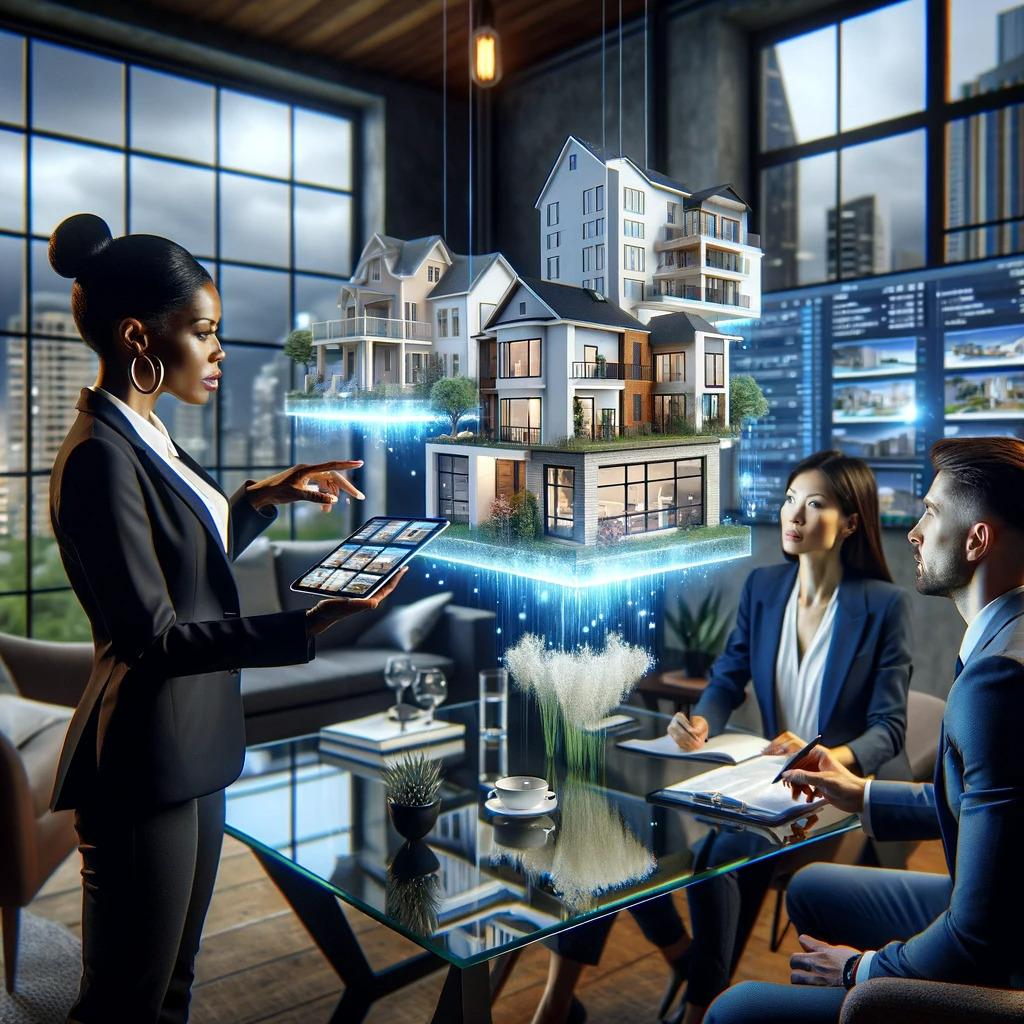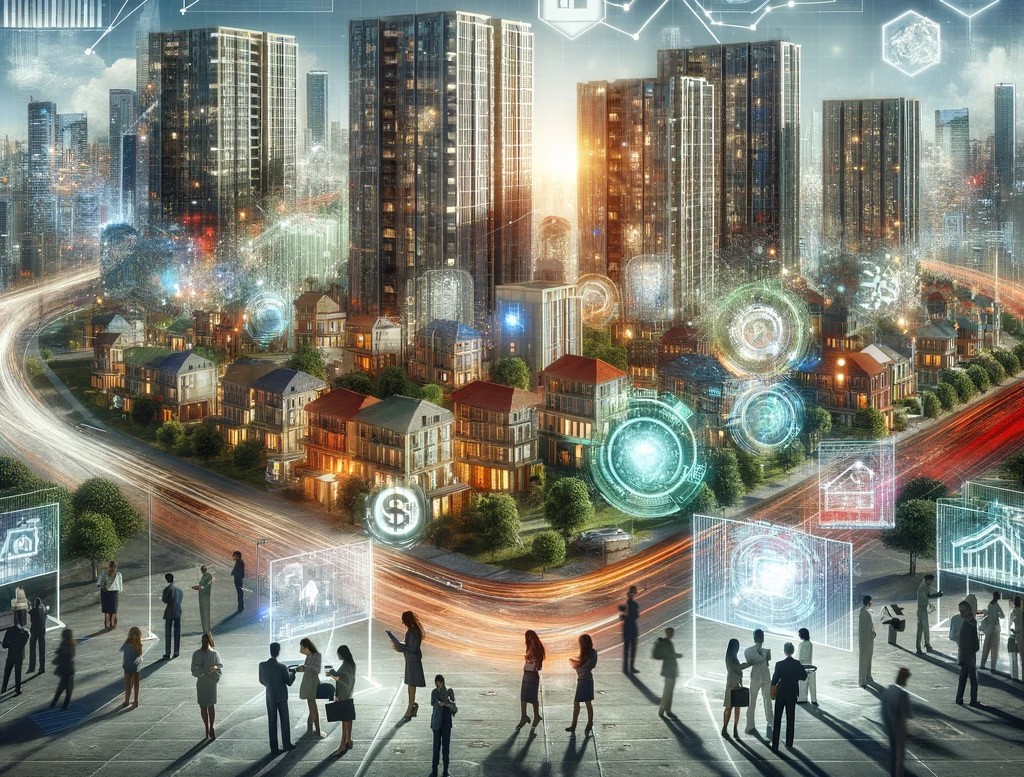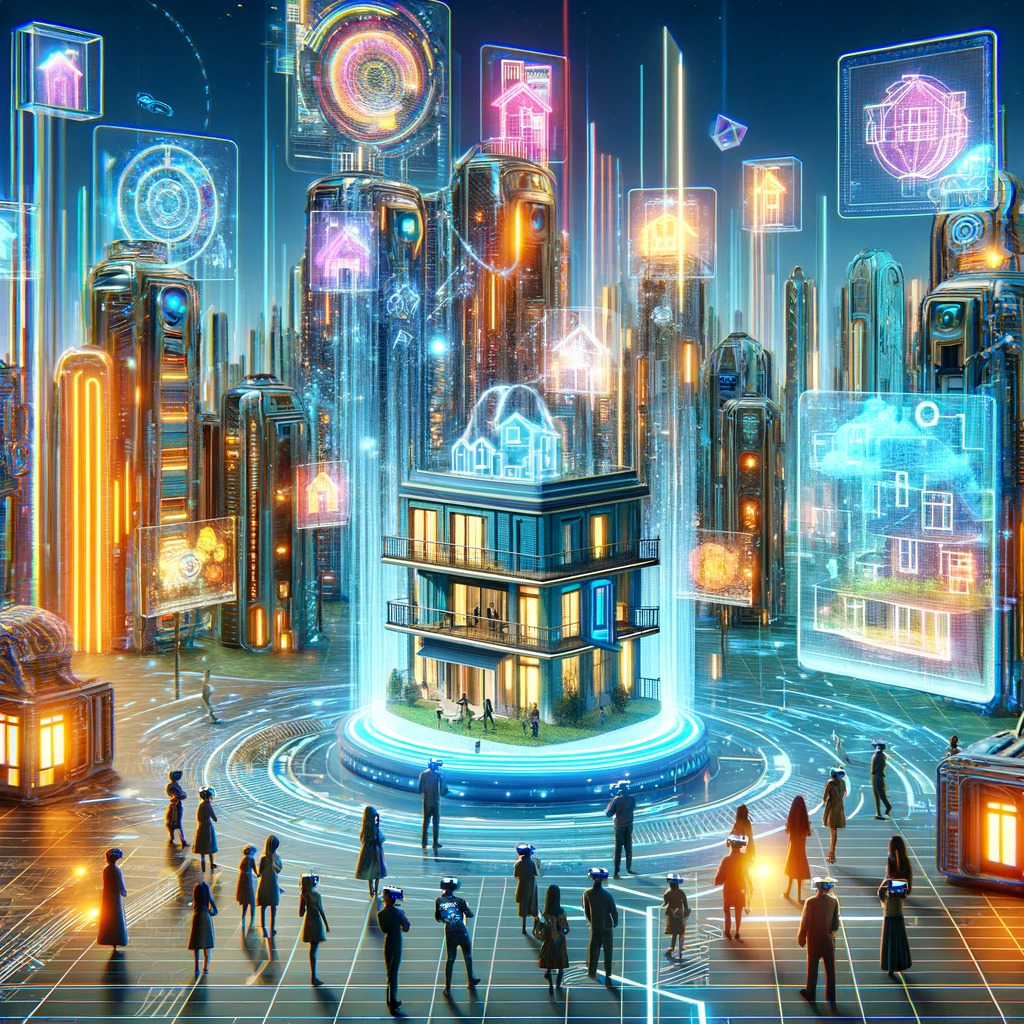Welcome to the dynamic and ever-evolving world of Indian real estate, where the advent of Virtual Reality (VR) and Augmented Reality (AR) is creating waves of change! These groundbreaking technologies are not just trends, they’re revolutionizing the way properties are showcased and marketed. Imagine exploring a property from the comfort of your home, getting a 360-degree view, and experiencing spaces as if you were there – that’s the magic VR and AR are bringing to the table. It’s an incredibly exciting time in the industry, blending the best of technology with the art of real estate, so let’s dive into what this means for buyers, sellers, and everyone in between!
Virtual Reality in Indian Real Estate
Virtual Reality is transforming the Indian real estate market by offering immersive, interactive, and realistic experiences of properties to potential buyers. Its ability to provide detailed property visualization remotely is not only convenient but also a game-changer in terms of marketing and selling properties in the digital age. This technology is revolutionizing the way properties are showcased, explored, and marketed. Let’s break down its various aspects:
Immersive Property Visualization: VR technology allows for a fully immersive experience, where potential buyers or investors can wear VR headsets, like the Oculus Rift or HTC Vive, to virtually enter and explore a property. This experience is far more immersive than traditional photos or videos. Users can ‘walk’ through the property, get a sense of the space, layout, and ambiance, which helps them to visualize themselves in that environment.
High-Quality 3D Modeling: Properties showcased in VR are represented using high-quality 3D models. These models are created with great attention to detail, incorporating realistic textures and advanced lighting techniques. This attention to detail ensures that the virtual representation closely mirrors the actual property, giving users a very accurate sense of what the property looks like.
Interactive Exploration: VR in real estate is not just a passive viewing experience. Users can interact with the environment in various ways. For example, they can open doors, switch lights on and off, or even change the decor and furniture settings. This level of interaction is not possible with traditional marketing methods.
Remote Accessibility: One of the biggest advantages of VR in real estate is the ability to explore properties remotely. Potential buyers can visit numerous properties from the comfort of their home, without the need to physically travel to each location. This is particularly advantageous in a country as large as India, where distances can be significant.
Examples and Adoption in India: Companies like eXp India are leading examples of how VR is being used in the Indian real estate market. eXp India, a subsidiary of eXp World Holdings, has adopted a fully-immersive virtual business model. They offer a platform where agents can provide virtual tours of properties to clients. Such models have proven especially beneficial during times when physical property visits are limited, like during the COVID-19 pandemic.
Impact on Customer Engagement and Sales: By providing a realistic and interactive view of properties, VR increases customer engagement. It helps buyers in making informed decisions, which can lead to quicker sales closures. Real estate agencies using VR can provide a more comprehensive and engaging experience to their clients, setting them apart from competitors who use traditional marketing methods.
Future Prospects: The role of VR in Indian real estate is expected to grow significantly. As the technology becomes more accessible and affordable, more real estate companies are likely to adopt it. This will not only enhance the buying experience for customers but also revolutionize the way real estate is marketed in India.
Augmented Reality in Indian Real Estate

Augmented Reality (AR) in the Indian real estate sector represents a significant technological advancement, altering the way properties are marketed, visualized, and experienced. Here’s an in-depth look at how AR is being used and its impact on the industry:
1. Real-World Overlay with Virtual Elements
AR technology in real estate primarily involves overlaying virtual elements onto the real-world environment. This is achieved through smartphones and tablets, utilizing their cameras and sensors.
Potential buyers can use AR to see virtual renditions of properties in their actual environment. For instance, a user can point their device at an empty room to visualize it with furniture, decorations, or even different wall colors.
2. Markerless AR and Seamless Integration
Earlier versions of AR required physical markers to position virtual objects in the real world. However, advancements in computer vision technology have led to the development of markerless AR, which eliminates the need for these markers.
This technology allows for a more seamless and intuitive experience, as users can easily visualize changes and additions to physical spaces without the need for specialized equipment or setups.
3. Enhanced Customer Experience
AR provides an interactive platform for potential buyers to explore and engage with properties. They can experiment with different layouts, furniture arrangements, and decor styles within the actual space of the property.
By enabling buyers to visualize the final look of a property, AR helps in making more informed purchasing decisions. It gives a clearer idea of how the space can be utilized and personalized, enhancing buyer confidence.
4. Remote Accessibility
One of the significant benefits of AR in real estate is the ability to view and interact with properties remotely. This feature is invaluable for buyers who are not in the immediate vicinity of the property or for those who want to explore multiple options conveniently.
5. Reducing the Need for Physical Models and Showrooms
AR can reduce the need for expensive physical models and showrooms. Real estate developers can use AR to showcase different property designs and layouts virtually, saving on the costs associated with building and maintaining physical models.
6. Market Trends and Adoption in India:
The adoption of AR in the Indian real estate market is growing. It is seen as a tool that adds significant value in terms of visualization and customer experience.
Future Prospects: The continued development of AR technology suggests that its role in real estate will expand, offering even more sophisticated and realistic visualizations in the future.
Market Demand and Trends

These technologies are not only enhancing the way properties are visualized and marketed but are also revolutionizing the overall customer experience and the efficiency of the real estate buying process. As these technologies continue to evolve and become more accessible, their impact on the real estate market is likely to become even more significant.
Growing Adoption of VR and AR
There is an increasing trend in the adoption of VR and AR technologies in the Indian real estate sector. The market is projected to grow at a significant compound annual growth rate (CAGR) of 30% from 2021 to 2026. This growth indicates that the real estate industry in India is recognizing the substantial value these technologies bring to property visualization, marketing, and enhancing customer experiences.
Remote Property Viewing
One of the most significant benefits of VR and AR technologies is their ability to facilitate remote property viewing. This feature is particularly advantageous in the current scenario, where physical property visits may be limited due to various factors such as distance or health concerns. A survey conducted by Magicbricks, a prominent real estate portal in India, revealed that a vast majority (88%) of homebuyers believe VR technology is helpful in shortlisting properties without needing to visit the site. This trend is especially useful for buyers who are geographically distant from the property or prefer to explore options from the comfort of their homes.
Enhanced Customer Experience
VR and AR technologies offer unique and immersive experiences to potential buyers. They allow customers to virtually walk through properties, providing a realistic sense of the space and ambiance. This level of immersive experience enhances transparency and aids buyers in making more informed decisions. According to a study by Goldman Sachs, VR and AR technologies are expected to contribute up to $2.6 Billion to the real estate sector in India by 2025, largely due to improvements in customer engagement and satisfaction.
Streamlined Decision-making
VR and AR empower buyers to make informed decisions by allowing them to visualize properties with various customization options. Potential buyers can virtually modify spaces, experiment with different designs, and envision the potential of a property. This capability significantly aids in the decision-making process. A report by Duff & Phelps suggests that VR and AR technologies could reduce the average sales cycle of a property by up to 40%, thereby streamlining the decision-making process and increasing sales efficiency for real estate developers.
The Metaverse and Real Estate

The Metaverse is a collective virtual space, created by the convergence of virtually enhanced physical reality, augmented reality (AR), and internet-enabled virtual worlds. It’s a digital platform that merges technology through programs like VR (Virtual Reality), AR, and XR (Extended Reality) to provide highly realistic, immersive experiences.
Virtual Property Showcases: In the Metaverse, real estate properties can be showcased virtually, allowing potential buyers to explore them in a 3D environment. This is particularly useful for properties that are not yet built, as it provides a realistic representation of what the finished property will look like.
Remote Engagement: The Metaverse enables remote interaction with properties, which is a significant advantage for international or distant buyers. They can virtually tour properties from anywhere in the world, without the need for physical travel, making the process more convenient and efficient.
Enhanced Marketing Tools: Real estate marketers can use the Metaverse to create more engaging and interactive marketing campaigns. For example, they can develop virtual tours that are more immersive than traditional video tours, offering a better sense of the space and layout of a property.
Virtual Transactions: The potential for conducting transactions in the Metaverse could transform the real estate buying and selling process. Virtual real estate, or properties existing only within virtual worlds, can also be traded, offering a new investment avenue.
Simulation of Real-world Scenarios: The Metaverse can simulate various real-world scenarios like different lighting conditions, furniture layouts, or even neighborhood settings, providing a comprehensive sense of the property and its surroundings.
Real Estate Investment Trusts (REITs) in the Metaverse: Recently, there’s been the formation of Metaverse REITs or digital Real Estate Investment Trusts. This development indicates a growing interest in investing in virtual properties, akin to investing in physical real estate.
Global Accessibility: The Metaverse transcends geographical boundaries, making real estate accessible to a global audience. This not only expands the market for sellers but also provides more options for buyers.
Adapting to New Technologies: The real estate industry must adapt to these new technologies to stay relevant. For instance, real estate agents and companies need to learn how to operate within the Metaverse, understanding how to present and sell properties in a virtual environment.
As the Metaverse technology matures and becomes more widely adopted, its impact on real estate is expected to grow. This could lead to new business models and opportunities within the real estate sector. Its immersive and interactive nature provides a unique platform that can enhance customer experience, widen market reach, and introduce new forms of property investment.
The integration of Virtual Reality and Augmented Reality in the Indian real estate market marks a transformative era. These technologies enhance property visualization, streamline the buying process, and offer immersive experiences, leading to increased customer engagement and efficiency. The rise of VR and AR signifies a significant shift towards digital innovation in real estate.





